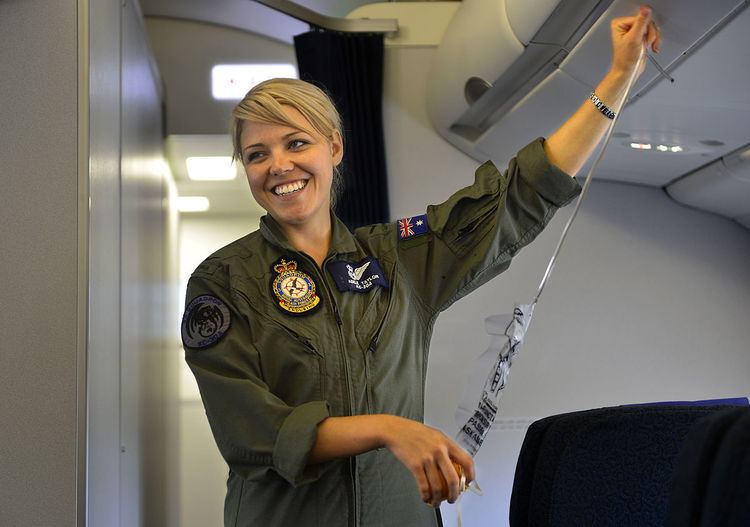 | ||
The pre-flight safety briefing (also known as a pre-flight demonstration, in-flight safety briefing, in-flight safety demonstration, safety instructions, or simply the safety video) is a detailed explanation given before take-off to airline passengers about the safety features of the aircraft they are aboard.
Aviation regulations do not state how an airline should deliver the briefing, only that ‘The operator of an aircraft shall ensure that all passengers are orally briefed before each take-off’. As a result, and depending on the inflight entertainment system in the aircraft, as well as the airline’s policy, airlines may deliver a pre-recorded briefing or provide a live demonstration. A live demonstration is performed by a flight attendant/s standing up in the aisle/s, while another flight attendant narrates over the public address system. A pre-recorded briefing may feature audio only, or may take the form of a video (audio plus visual). Pre-flight safety briefings typically last two to six minutes. In consideration for travelers not speaking the airline's official language and for the passengers with hearing problems, the video may feature subtitles, an on-screen signer, or may be repeated in another language.
Some safety videos are made using three-dimensional graphics. Other videos were made to be humorous, or feature celebrities, or were based on popular movies. Many safety videos were uploaded to YouTube. Cebu Pacific choreographed the entire demonstration to Lady Gaga's "Just Dance" and Katy Perry's "California Gurls" as an experiment during one of their flights. The flight attendant featured in the most recent Delta Air Lines video has become an internet celebrity known as Deltalina.
In an emergency, flight attendants are trained to calmly instruct passengers how to respond, given the type of emergency. Research conducted at the University of New South Wales Australia questions the effectiveness of these briefings in conveying key safety messages for passengers to recall and act upon in an emergency. In one study, a range of pre-recorded safety briefings were tested. One safety briefing contained humour, another was void of humour (said to reflect a standard style briefing), and another used a celebrity to sell the importance of the safety briefing and the messages contained within. Not long after being exposed to the briefing, individuals recalled approximately 50% of the key safety messages from the briefing featuring the celebrity, 45% from the briefing containing humour, and 32% from the briefing void of both a celebrity and humour. Two hours post exposure to the pre-flight safety briefings, recall decreased on average by 4% from the original levels across all conditions.
Required elements
Airlines are required to orally brief their passengers before each take-off. This requirement is set by their nations civil aviation authority, under the recommendation of the International Civil Aviation Organization. How they do this is up to the airline, but most (if not all) elect to do this through a safety briefing or demonstration delivered to all passengers at the same time. A safety demonstration typically covers all these aspects, not necessarily in this order:
